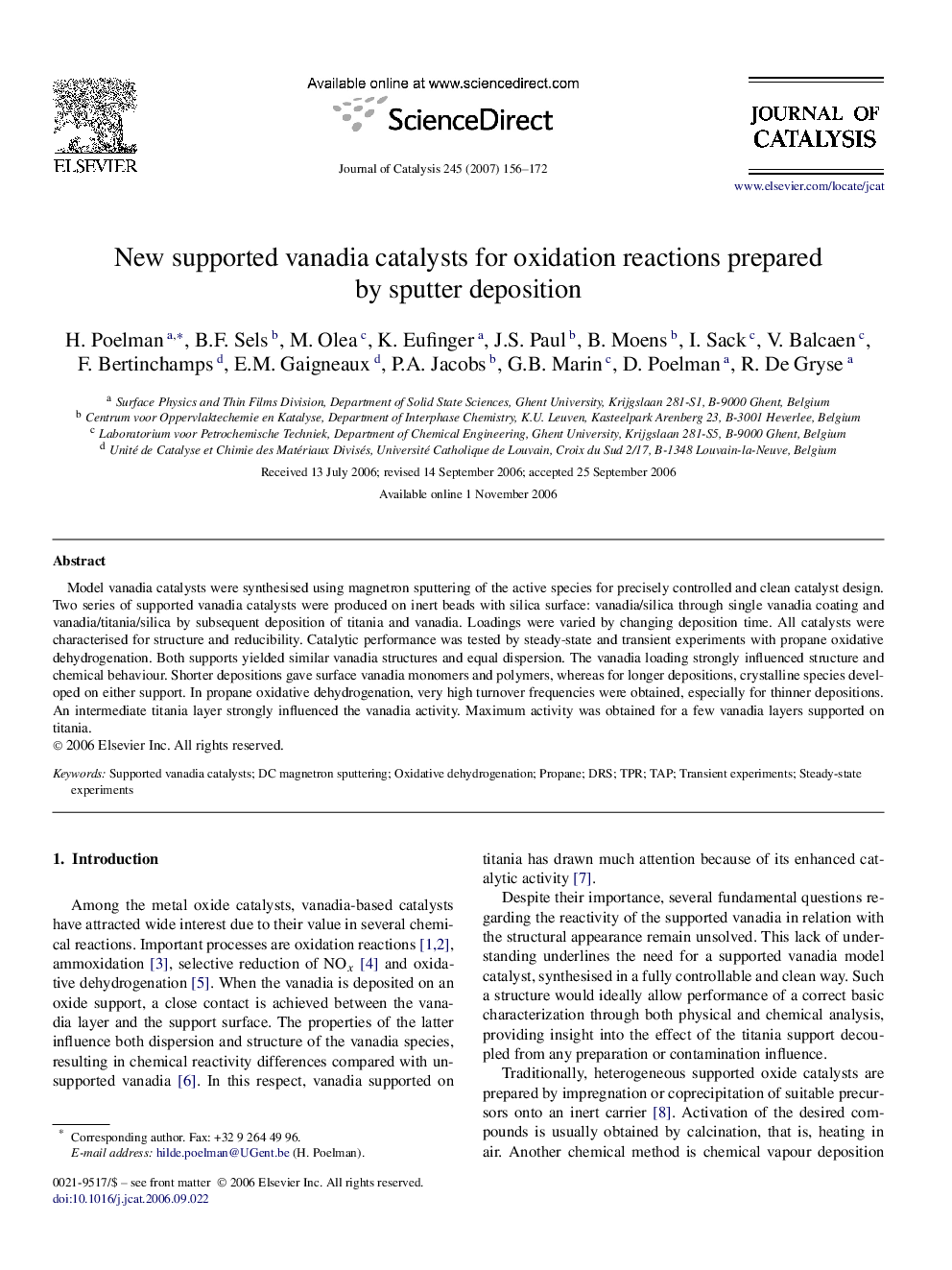| Article ID | Journal | Published Year | Pages | File Type |
|---|---|---|---|---|
| 63345 | Journal of Catalysis | 2007 | 17 Pages |
Model vanadia catalysts were synthesised using magnetron sputtering of the active species for precisely controlled and clean catalyst design. Two series of supported vanadia catalysts were produced on inert beads with silica surface: vanadia/silica through single vanadia coating and vanadia/titania/silica by subsequent deposition of titania and vanadia. Loadings were varied by changing deposition time. All catalysts were characterised for structure and reducibility. Catalytic performance was tested by steady-state and transient experiments with propane oxidative dehydrogenation. Both supports yielded similar vanadia structures and equal dispersion. The vanadia loading strongly influenced structure and chemical behaviour. Shorter depositions gave surface vanadia monomers and polymers, whereas for longer depositions, crystalline species developed on either support. In propane oxidative dehydrogenation, very high turnover frequencies were obtained, especially for thinner depositions. An intermediate titania layer strongly influenced the vanadia activity. Maximum activity was obtained for a few vanadia layers supported on titania.
